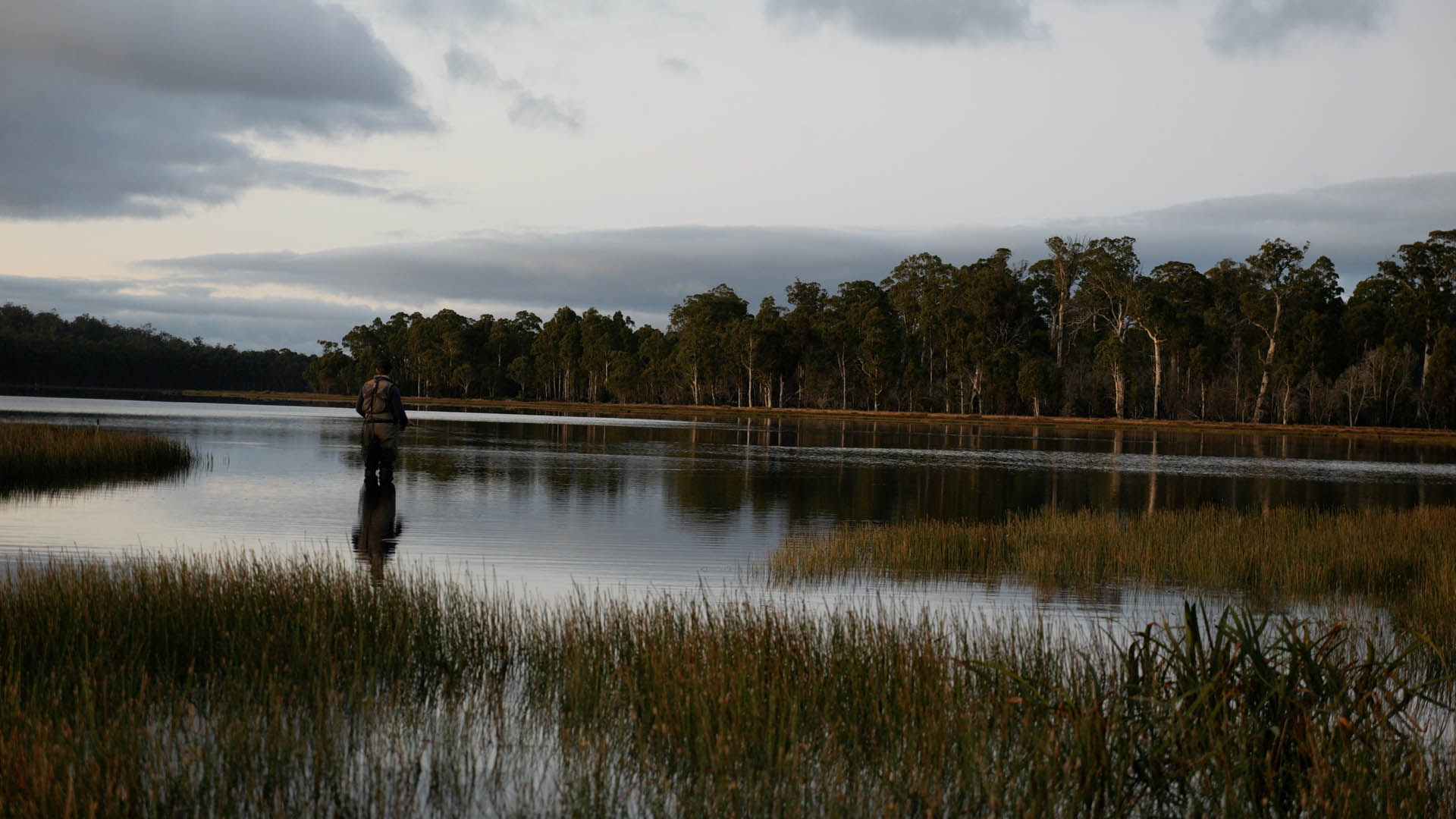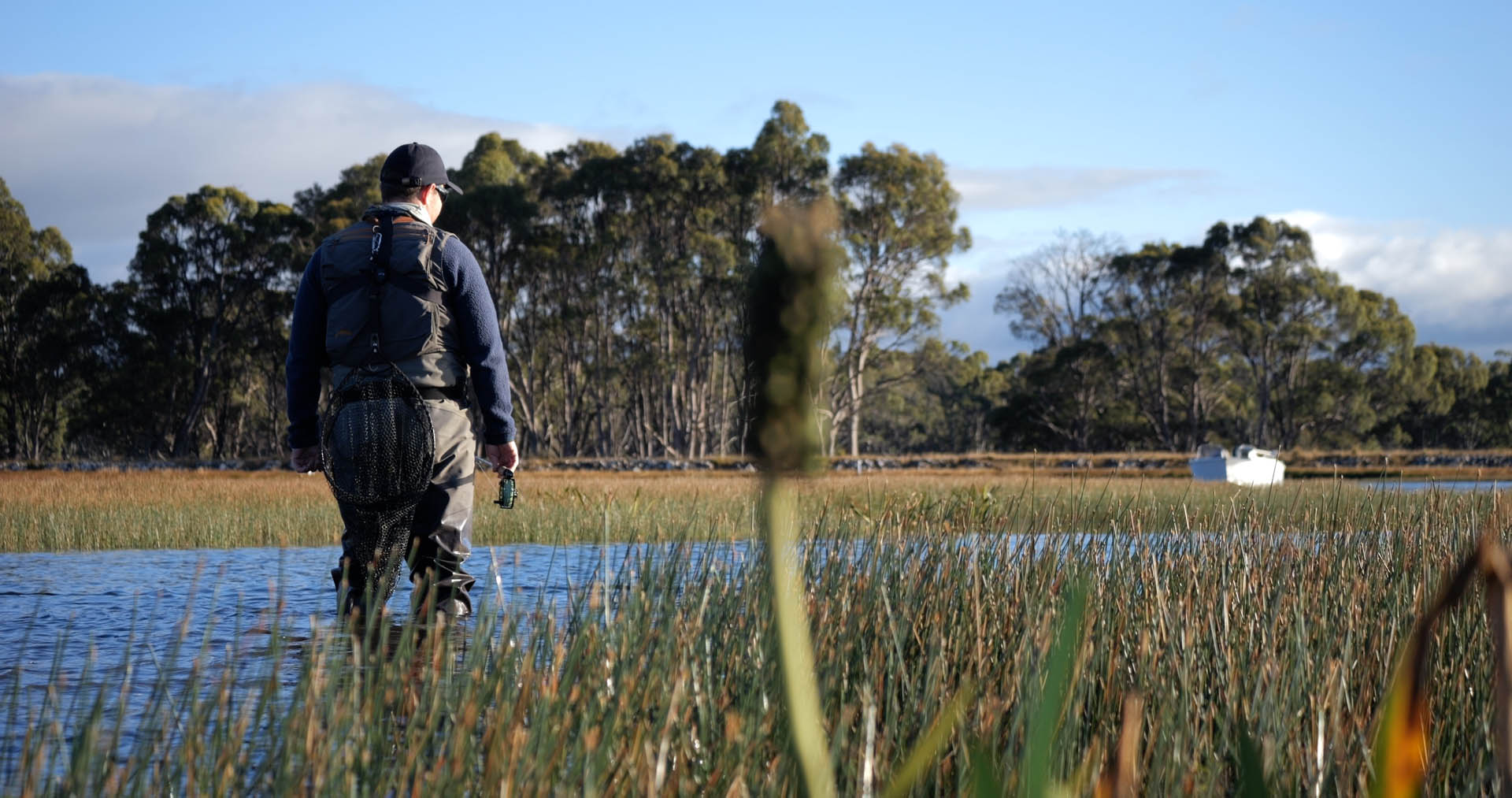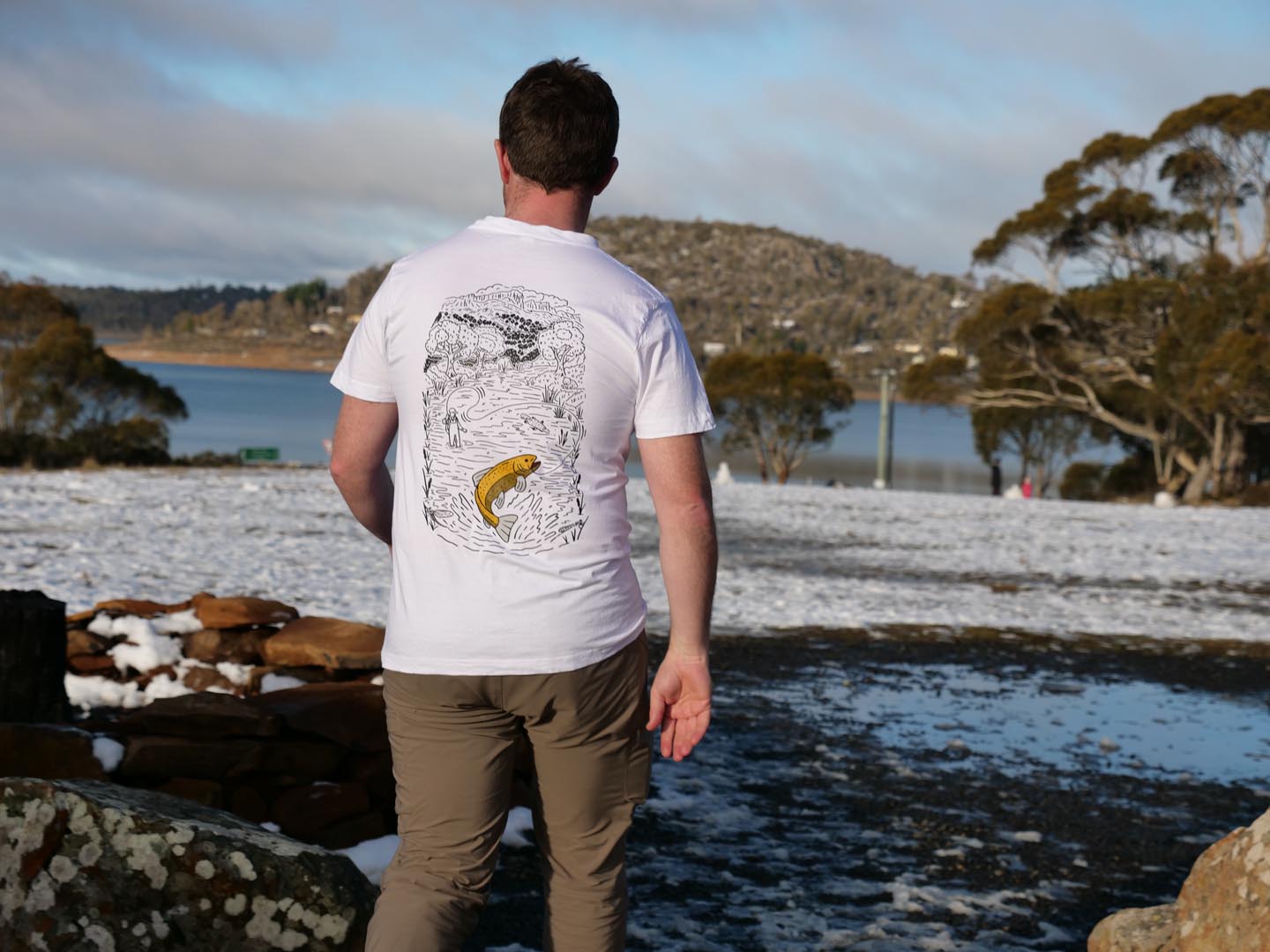Master the art of trout fishing in Tasmania with our comprehensive guide to netting a fish, including expert tips to ensure a successful and humane catch.
When you’ve got a nice fish on the line, the key to success isn’t just in hooking it but in how you bring it to the boat.
This crucial step can make or break your fishing experience when fly fishing in Tasmania - whether you're at Penstock Lagoon, Great Lake, or the Central Highlands, understanding the right techniques for netting your catch is essential.
Taking your time and focusing on the fish’s behaviour is what sets experienced anglers apart. A fish that’s still full of energy and thrashing around is a challenge to net.
As you reel it in, “we really just want to take our time and what we’re looking for is to get the fish’s head up onto the top of the water,” advises Matt Stone, owner of Trout Tales Tasmania. This method helps in reducing stress on the fish and ensures that you don’t lose your catch in the final moments.
When trout fishing in Tasmania, especially in the varied conditions of locations like Arthurs Lake or Little Pine Lagoon, positioning the fish properly is crucial.
“The actual netting process of a fish should be pretty smooth, it should just be a simple sliding down,” says Matt. This technique minimises the chances of errors and ensures that the fish is netted gently and efficiently.
Key Takeaways
- Patience is key: Allow the trout to tire itself out before attempting to net it.
- Proper fish positioning: Ensure the trout’s head is above water before making your move.
- Smooth and controlled technique: Avoid sudden movements to reduce stress on the fish and prevent mishaps.
- Preparation is essential: Always keep your net within easy reach and ready to use during your trout fishing trips in Tasmania.
Watch our video:
Can't wait to get in on the action, check out our feature video below on mastering the art of netting when fly fishing in Tasmania.
Steps to Effective Trout Netting in Tasmania
Taking Your Time: Patience in Trout Fishing
When you're out on the water, the real art of trout fishing comes down to patience.
Let the fish have a couple of long runs to wear itself out. As it tires, you’ll find it easier to bring closer to the boat. “You really want to wait until that fish has tired itself out,” Matt explains.
This approach not only increases your chances of a successful netting but also minimises the stress on the fish, which is important for maintaining the health of Tasmania’s trout population.
Positioning and Technique for Trout Netting
Getting the trout’s head above water before netting is crucial.
"What we're looking for is to get the fish's head up onto the top of the water," says Matt. "This position indicates that the trout is tired and less likely to thrash, making the netting process more controlled and efficient."
Preparation is Key in Trout Fishing Tasmania
Preparation is also essential for any trout fishing adventure in Tasmania.
The right gear, especially a long-handled net with a wide bucket, can make a significant difference in your success rate.
Keeping your net easily accessible is also another important tip that can ensure you're ready when the moment comes.
"Having your net within reach is crucial," Matt emphasises. "When you've got a fantastic trout on the line, the last thing you want is to be fumbling around for your net as the fish approaches."
Conclusion
As anglers, we know that trout fishing in Tasmania isn't just a pastime - it’s a deep-rooted tradition that connects anglers with the pristine nature of the island.
By mastering the art of netting and following the techniques outlined in this guide, you can ensure that your trout fishing experience is both successful and respectful of the environment.
Whether you're a local or a visitor, these tips will help you make the most of your time on Tasmania’s world-renowned fishing waters.
So, as you prepare for your next trout fishing trip in Tasmania, remember these key points:
- be patient
- position the trout correctly and
- always be prepared.
With these techniques in your arsenal, you're well on your way to becoming a more skilled and conscientious angler in Tasmania’s beautiful outdoors.
Tight lines, Matt.
Feature Posts
Ready to book A trip?
Experience all of what fishing in Tasmania has to offer through a personalised fly fishing tour.
Book Now





